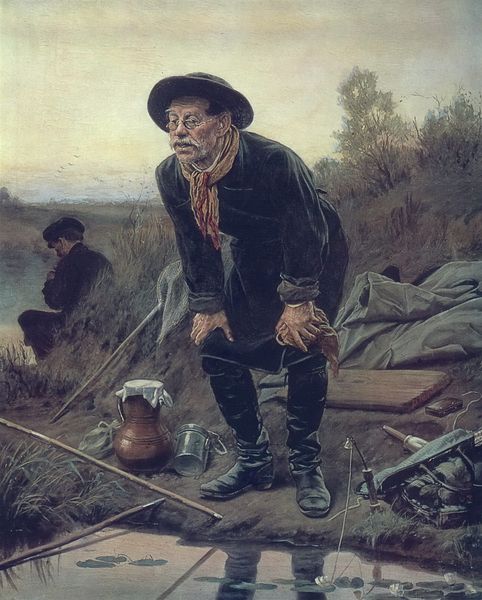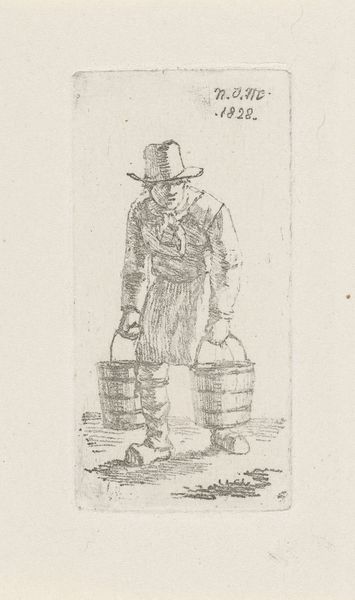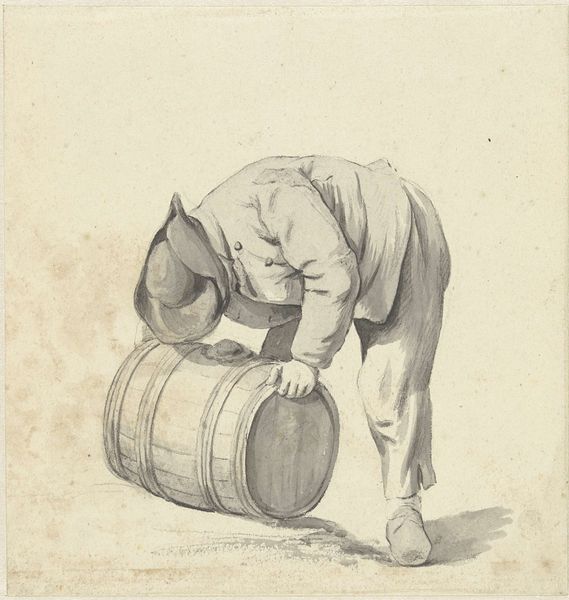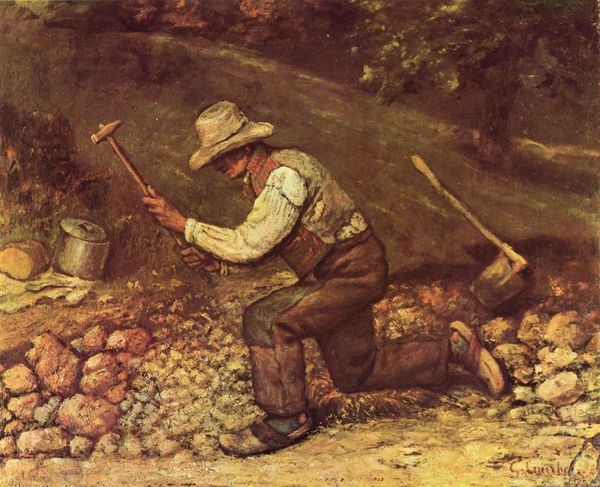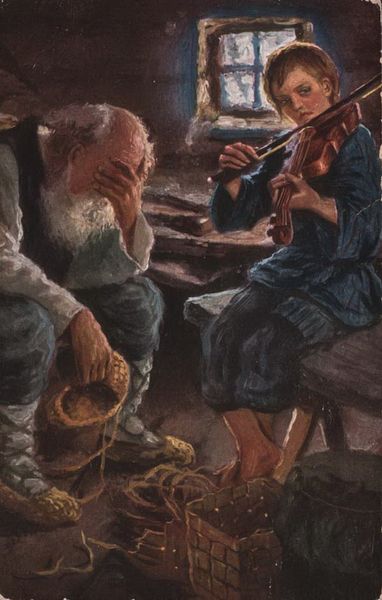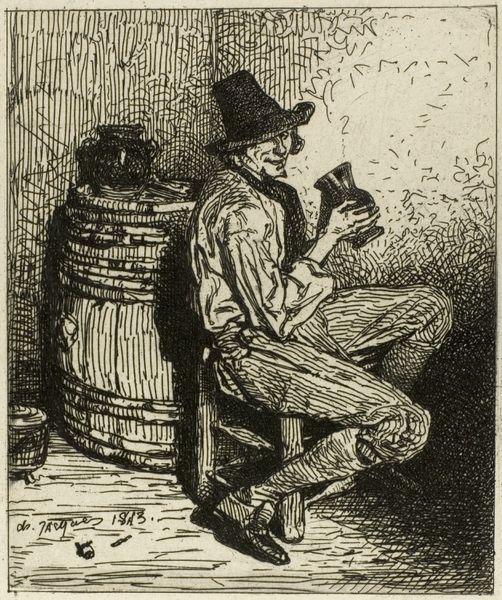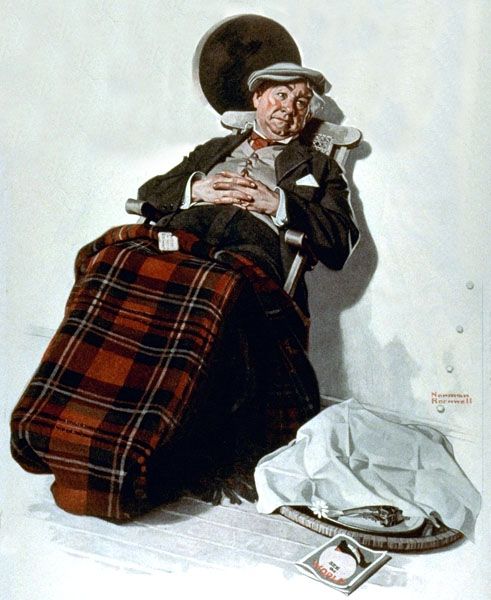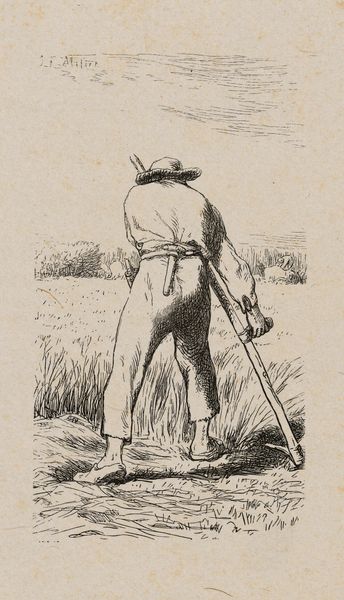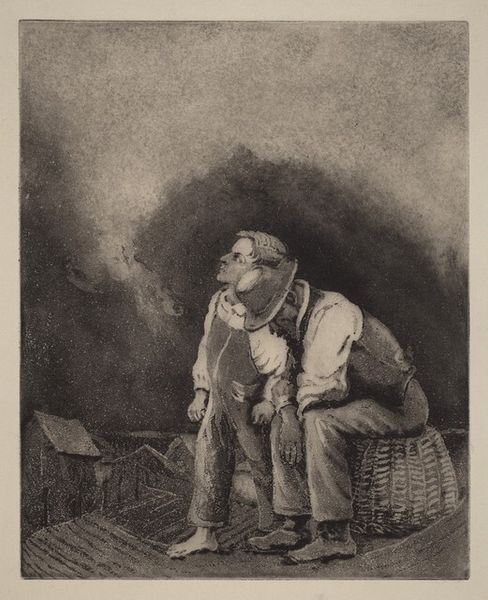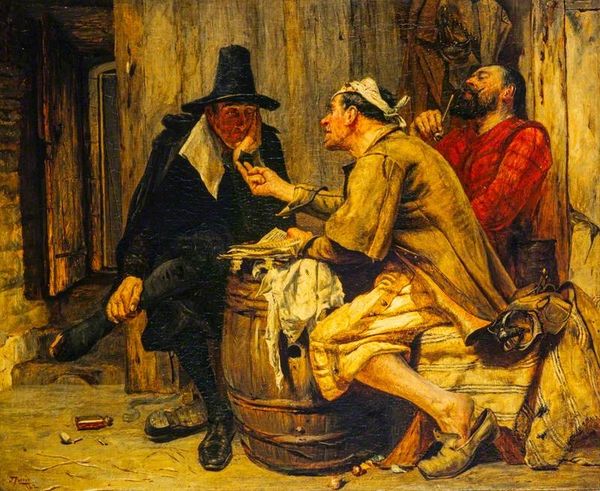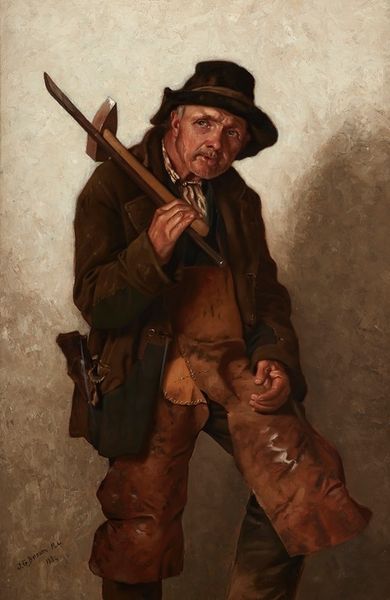
watercolor
#
portrait
#
charcoal drawing
#
figuration
#
oil painting
#
watercolor
#
portrait reference
#
romanticism
#
portrait drawing
#
genre-painting
Copyright: Public domain
Editor: This is William Henry Hunt’s "An Oysterman," created around 1827. It's a watercolor that, to me, evokes a sense of quiet contemplation. The subject’s posture and the muted tones contribute to a somewhat melancholic mood. What do you see when you look at this work? Curator: Immediately, I am drawn to the structural relationships within the composition. Consider the triangular arrangement formed by the figure’s limbs and torso. This lends a formal stability that belies the subject’s apparent disquiet. How do the artist’s precise rendering of textures contribute to your understanding? Editor: The details certainly add depth – the roughness of his coat, the weathered skin. But what meaning do you extract from such realism? Curator: Meaning emerges from the interplay of these meticulously rendered details. Observe how the light catches the folds of his clothing, emphasizing volume and form. The tonal variations and gradations in the watercolor technique serve to create not just an image, but a self-contained world with its own internal logic. Do you notice any compositional choices? Editor: I see that the man’s gaze meets the viewer, it creates intimacy. Is this effect purely visual, or something more? Curator: Let us resist projecting subjective narratives onto the figure and instead focus on the artwork as an object in itself. The formal elements guide our understanding and shape experience. Through considered observation of colour, line and composition. Editor: So, focusing on how Hunt built the piece helps appreciate it more. Curator: Precisely. We have been looking at its physical qualities; the artist’s mastery and the interplay of these features allow us to appreciate and experience the art.
Comments
No comments
Be the first to comment and join the conversation on the ultimate creative platform.
